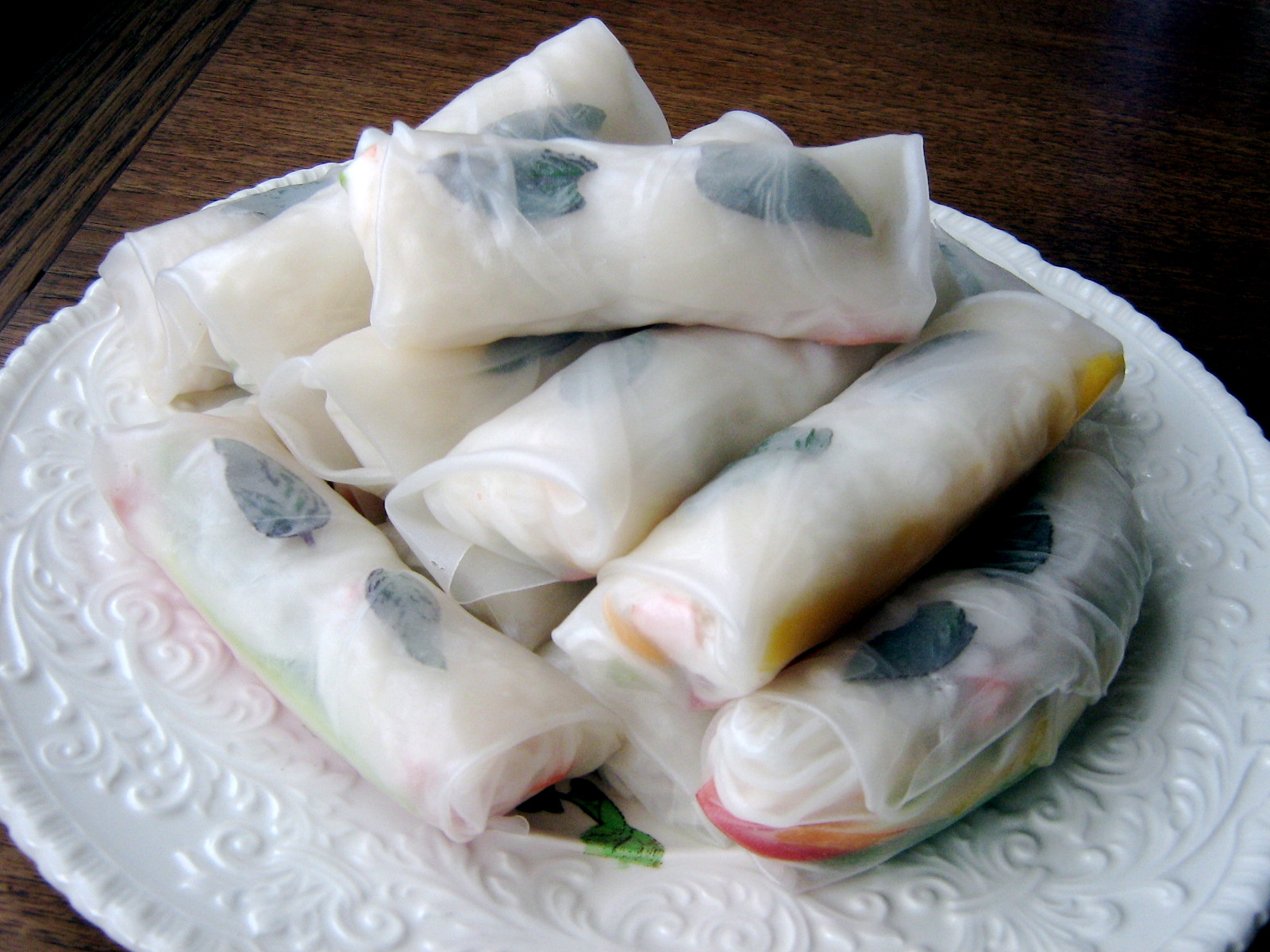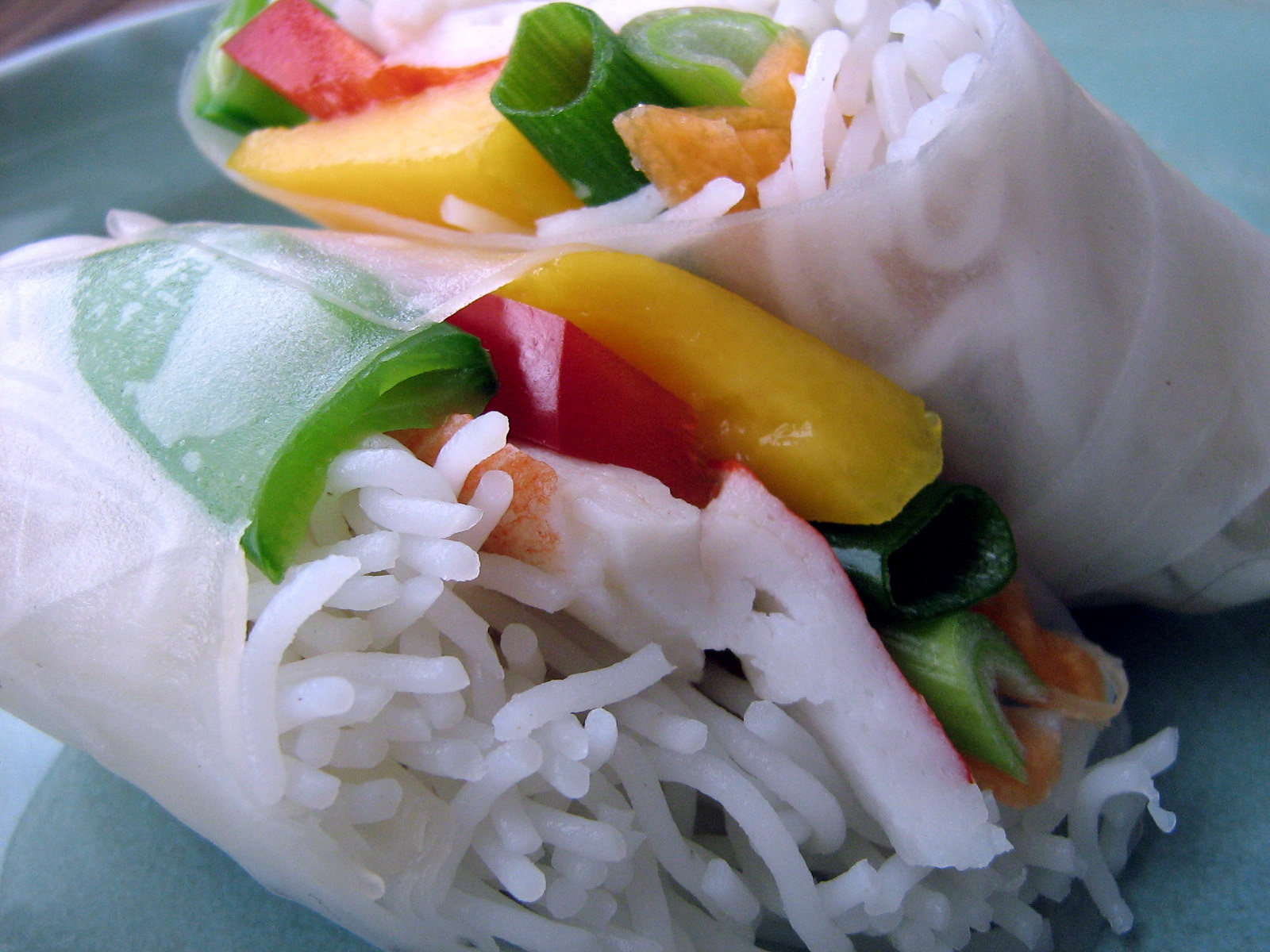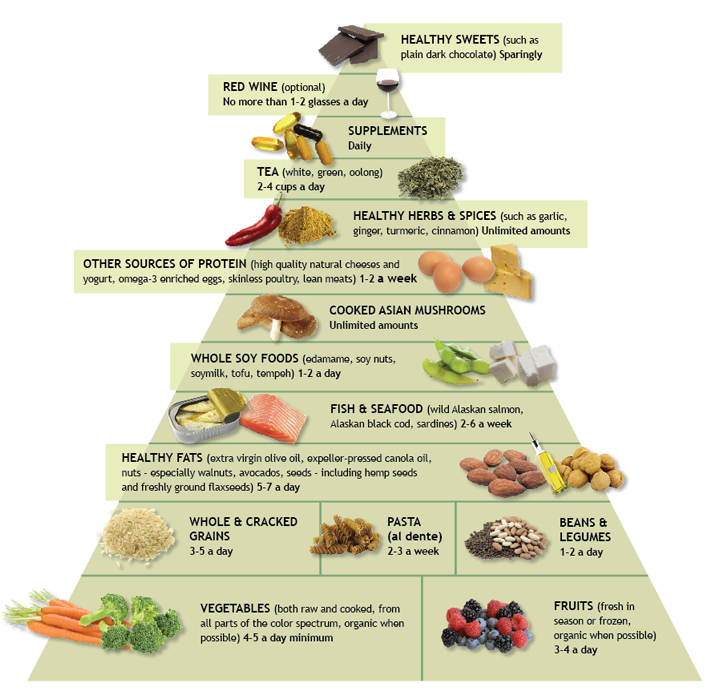 Salad rolls are one of my favorite things to eat in the summer: fresh vegetables, delicious peanut sauce, and eating with my hands. I made a big plate of these for dinner and Nate and I ate them all (well, there’s one left). They are that good. If you’re not going to scarf down an entire plate for dinner, they make a great appetizer or potluck food!
Salad rolls are one of my favorite things to eat in the summer: fresh vegetables, delicious peanut sauce, and eating with my hands. I made a big plate of these for dinner and Nate and I ate them all (well, there’s one left). They are that good. If you’re not going to scarf down an entire plate for dinner, they make a great appetizer or potluck food! I used red pepper, mango, green onions, lightly steamed snow peas, shredded carrots, mint leaves, and imitation crab in these rolls, but you could put basically anything in them: steamed asparagus, bean sprouts, pea shoots, cucumber, avocado, lettuce, cilantro, basil leaves, cooked prawns, shrimp, or scallops, grilled chicken, pork, or beef (leftover steak would be delicious!)…
I used red pepper, mango, green onions, lightly steamed snow peas, shredded carrots, mint leaves, and imitation crab in these rolls, but you could put basically anything in them: steamed asparagus, bean sprouts, pea shoots, cucumber, avocado, lettuce, cilantro, basil leaves, cooked prawns, shrimp, or scallops, grilled chicken, pork, or beef (leftover steak would be delicious!)…  The only ingredients that are not up for interpretation are the rice noodles and rice paper wrappers. I always eat salad rolls with peanut sauce and sweet chili sauce, but again, totally up to your own preference. I’ve included my favorite peanut sauce recipe – I could eat this stuff by the bowlful….
The only ingredients that are not up for interpretation are the rice noodles and rice paper wrappers. I always eat salad rolls with peanut sauce and sweet chili sauce, but again, totally up to your own preference. I’ve included my favorite peanut sauce recipe – I could eat this stuff by the bowlful….
Kale Tops and Spicy Peanut Stir Fry Sauce
 I love spring. I love the warmer weather (well, slightly warmer – it’s still pretty darn cold out around here!), the longer days, the crocuses and cherry blossoms, the singing birds… but what I’m really appreciating this spring, more than usual perhaps, is the abundance of gorgeous, fresh, spring vegetables that are available – many of them local. At The Root Cellar, which is a super awesome green grocer in Victoria that you should definitely check out if you have not already, they stock all kinds of fantastic local spring produce, some of it fairly standard – chard, parsley, butter lettuce – and some of it more unusual – sorrel, collard greens, and kale tops. Most of the local greens in stock at the moment are from Vantreight Farms, best known for all those daffodils.
I love spring. I love the warmer weather (well, slightly warmer – it’s still pretty darn cold out around here!), the longer days, the crocuses and cherry blossoms, the singing birds… but what I’m really appreciating this spring, more than usual perhaps, is the abundance of gorgeous, fresh, spring vegetables that are available – many of them local. At The Root Cellar, which is a super awesome green grocer in Victoria that you should definitely check out if you have not already, they stock all kinds of fantastic local spring produce, some of it fairly standard – chard, parsley, butter lettuce – and some of it more unusual – sorrel, collard greens, and kale tops. Most of the local greens in stock at the moment are from Vantreight Farms, best known for all those daffodils.
Anyway. The other day I was at The Root Cellar, browsing for dinner ideas, and I saw these kale tops. I am a big fan of brassicas (the broccoli family – my Dad calls them broccolids) so I was intrigued. Essentially, this is kale that is going to seed and is just about to burst into flower – probably not something that most people would think to eat, and definitely the first time I’ve ever seen it in a store – but why not? They looked so beautiful, green and crisp and fresh… so I brought some home to try….
The Anti-Inflammatory Diet and Buying Organic (or not!)
I was Stumbling around the web today and I came across Dr. Andrew Weil’s website – specifically, his Anti-Inflammatory Food Pyramid, which piqued my interest. His position on food and health is that some foods promote an inflammatory response in the body, while others are anti-inflammatory. Inflammation is a natural process by which the body heals itself, however prolonged inflammation (think heat, swelling, redness, etc) can be harmful, and eating anti-inflammatory foods helps to reduce inflammation and promote better health. Whether or not you subscribe to this way of thinking, I like the food pyramid he sets out, and I also like his dietary recommendations. He talks about “diet” in the same way that I like to think about it: not as a quick fix way to lose weight by eating only grapefruit or cabbage soup, but the daily practice of choosing what to eat to make your body healthy – looking at food as something good for you, rather than as something bad that you need to deprive yourself of. Ultimately, we need calories from food to live, and making healthy choices to get the most out of those calories (health-wise and enjoyment-wise!) is the best way to do that. Also, I like that chocolate is right at the top of the pyramid 😉
Anyway, enough preaching about that. This article gives the dietary recommendations that go along with the pyramid.
While browsing his website, I also came across these two lists: produce that can be bought conventionally grown because it does not carry a large pesticide load, and produce that should always be bought organic (when possible) because it does carry a large pesticide load.
Foods you don’t have to buy organic, aka the Clean 15:
(Assuming that the produce is washed)
- Onions
- Avocados
- Sweet Corn
- Pineapples
- Mangoes
- Sweet Peas
- Asparagus
- Kiwi
- Cabbage
- Eggplant
- Cantaloupe (Domestic)
- Watermelon
- Grapefruit
- Sweet Potatoes
- Honeydew Melon
Foods you should always buy organic, aka the Dirty Dozen:
- Celery
- Peaches
- Strawberries
- Apples
- Blueberries (Domestic)
- Nectarines
- Sweet Bell Peppers
- Spinach
- Collard Greens/Kale
- Cherries
- Potatoes
- Grapes (Imported)
Looking at this list, I need to start making some more organically-minded choices at the grocery store.
I’m reading David Suzuki’s Sacred Balance right now, and in it he talks about how the pesticide and toxin loads that humans carry in their bodies are on the rise – ironically, they are highest in the least industrialized areas of the world, for various reasons (I recommend reading the book if you are interested in knowing why!). We dump pollutants into the natural environment pretty indiscriminately, and it is only a matter of time before it comes back at us. While the trace amounts of toxins and pesticides in our food might not seem like a big deal, humans are at the top of the food chain, so those small amounts of toxins concentrate in our bodies – pretty nasty. Limiting that toxic concentration is a good argument for making organic choices when buying from the Dirty Dozen list! Again, I think it comes down to choosing your diet: balancing food choices that will make you healthy and happy.
(I know I haven’t mentioned it here, but I also think that buying locally and ethically is just as important as buying organic (and sometimes more!), not only for our personal health but for the health of our communities and the planet. However the links between organic, local, and ethical food are fascinating and complex, and that’s a kettle of fish to be saved for another post!)

